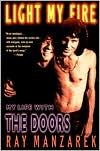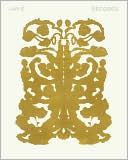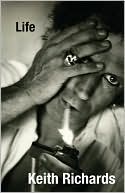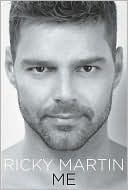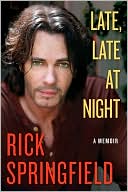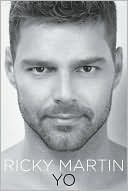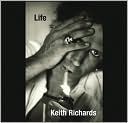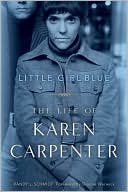Light My Fire
"A refreshingly candid read...a Doors bio worth opening." —Entertainment Weekly No other band has ever sounded quite like the Doors, and no other frontman has ever transfixed an audience quite the way Jim Morrison did. Ray Manzarek, the band's co-founder and keyboard player, was there from the very start—and until the sad dissolution—of the Doors. In this heartfelt and colorfully detailed memoir, complete with 16 pages of photographs, he brings us an insider's view of the brief, brilliant...
Search in google:
With the turbulence and psychedelia of the sixties as a backdrop, this is the untold story of the wild and liberated life of The Doors and lead singer Jim Morrison, by the only one who was there from the beginning. Ray Manzarek, a gifted musician heavily influenced by the Chicago blues sound back home, arrives in southern California and enters the UCLA film program. There he befriends a fellow film student from Florida named Jim Morrison. From the beginning, Manzarek and Morrison click, sharing the same literary, music, and film influences. They not only become friends but are rarely apart, until Morrison moves to Paris shortly before his death in 1971. Together with Robby Krieger and John Densmore, they create a sound, an original mix of jazz, classical, California surf, Flamenco guitar, and Chicago blues, that makes an irreversible impact on the music of the day. His story lays to rest the rumors that have abounded about the band, and gives illumination to the dark, shamanic myths that have surrounded the incendiary life of Jim Morrison. Peter Kurth "We don't know what happened to Jim Morrison in Paris," Ray Manzarek insists in his autobiographical memoir of Morrison and the Doors, titled, perhaps inevitably, Light My Fire. "To be honest, I don't think we're ever going to know. Rumors, innuendoes, self-serving lies, psychic projections to justify inner needs and maladies, and just plain goofiness cloud the truth." Manzarek was "musical leader" and keyboard player for The Doors, but his book, as it must be, is overwhelmingly about crazed, quixotic, muddle-headed Jim. "It really doesn't matter how an artist exits on the planet," Manzarek thinks. "It's the ART ... that matters. It's only the art that matters ... For me, that's what making music is all about. Plucking the notes out of the void. And for Jim it was about plucking the words out of the ether ... Images. Deep and penetrating. Confessional. Sometimes mundane, often profound. Never without meaning." Manzarek and Morrison met at the UCLA Film School in 1963, and much if not all of Light My Fire concerns the powerful, quasi-mystic bond the two men formed as students. Morrison came to California from swampy Florida and Manzarek from Chicago, but both had read the same books, seen the same movies and dreamed the same dreams. Morrison was "in love with the possibility that he could be an artist," Manzarek says. "In love with the idea of freedom! Freedom of expression, freedom of thought." Although Manzarek has written a conventional narrative that includes his own childhood and the multiple peregrinations of the four Doors up until Morrison's death in 1971, it is to Jim the Artist, Jim the Poet, Jim the Prophet that he always returns, writing in a tone so elegiac and in prose so thick with wonder it begins to fog your brain -- appropriately enough, when you think about the Doors. The band's life was short, and the mystique that still attaches to its name is in the nature of an urban legend. The bulk of the Doors' work seems badly dated, and the cultlike following they still enjoy says more about nostalgia than about music. "We were inside the song," Manzarek writes of the Doors' first musical session in Santa Monica. "And we were inside each other. We had given ourselves over to the rhythm, the chord changes, and the words. We had let go of our individual egos and surrendered to one another in the music ... There was only the music. The diamond was formed and it was clear and hard and luminous." Almost any page of Light My Fire contains similarly high-flown riffs: "We'll never make art again. We'll never make love on stage again. Jim and I will never do our Dionysius-and-Apollo dichotomy thing again." Manzarek writes of Morrison as an almost diagnosable split personality -- good boy/bad boy, "Jim" and "Jimbo" -- and attributes Morrison's drug-soaked demise plain and simple to "that rotter, Jimbo. The Doppelgänger." It's as convincing a description of a whacked-out artist as any other. And when he isn't eulogizing, or lambasting Oliver Stone, or lamenting the triumph of materialism in America, Manzarek provides a reliable inside account of the Doors and their era. We may not ever find out what happened in Paris, but there's enough rock history here to keep Manzarek on the shelves. -- Salon
\ From Barnes & NobleThe Barnes & Noble Review\ June 1998\ \ In the summer of 1965, Ray Manzarek ran into Jim Morrison on the sands of Venice Beach. Morrison mentioned that he had written lyrics for a couple of songs; he sang them for Manzarek, who was amazed. He said, "Jim, man, with your words and my keyboard — there's nobody doing this. What we're gonna do, nobody on the planet is doing. This music, our music, is called...psychedelic." Combining with the talents of Robby Krieger and John Densmore, they went on to create an original sound that transformed a generation and spawned The Doors. "In that year we had an intense visitation of energy," Manzarek says. "That year lasted from the summer of 1965 to July 3, 1971." \ For the first time, the only person who was there from the beginning tells the inside story of the wild life of The Doors and Jim Morrison. Light My Fire: My Life with the Doors goes behind the scenes to tell how The Doors came into existence. From gigs on Sunset Strip — home of the famed Whiskey-a-Go-Go — to a record deal with Elektra, from their first No. 1 hit, 1967's "Light My Fire," to their final recording session for "L.A. Woman," the book covers it all and lays to rest the many rumors that have surrounded the band and Jim Morrison for years. Manzarek gives an original, firsthand account that nobody else in the world could tell. Ray was there from the beginning and saw it all.\ \ \ \ \ \ Peter Kurth"We don't know what happened to Jim Morrison in Paris," Ray Manzarek insists in his autobiographical memoir of Morrison and the Doors, titled, perhaps inevitably, Light My Fire. "To be honest, I don't think we're ever going to know. Rumors, innuendoes, self-serving lies, psychic projections to justify inner needs and maladies, and just plain goofiness cloud the truth." Manzarek was "musical leader" and keyboard player for The Doors, but his book, as it must be, is overwhelmingly about crazed, quixotic, muddle-headed Jim. "It really doesn't matter how an artist exits on the planet," Manzarek thinks. "It's the ART ... that matters. It's only the art that matters ... For me, that's what making music is all about. Plucking the notes out of the void. And for Jim it was about plucking the words out of the ether ... Images. Deep and penetrating. Confessional. Sometimes mundane, often profound. Never without meaning."\ Manzarek and Morrison met at the UCLA Film School in 1963, and much if not all of Light My Fire concerns the powerful, quasi-mystic bond the two men formed as students. Morrison came to California from swampy Florida and Manzarek from Chicago, but both had read the same books, seen the same movies and dreamed the same dreams. Morrison was "in love with the possibility that he could be an artist," Manzarek says. "In love with the idea of freedom! Freedom of expression, freedom of thought." Although Manzarek has written a conventional narrative that includes his own childhood and the multiple peregrinations of the four Doors up until Morrison's death in 1971, it is to Jim the Artist, Jim the Poet, Jim the Prophet that he always returns, writing in a tone so elegiac and in prose so thick with wonder it begins to fog your brain -- appropriately enough, when you think about the Doors. The band's life was short, and the mystique that still attaches to its name is in the nature of an urban legend. The bulk of the Doors' work seems badly dated, and the cultlike following they still enjoy says more about nostalgia than about music.\ "We were inside the song," Manzarek writes of the Doors' first musical session in Santa Monica. "And we were inside each other. We had given ourselves over to the rhythm, the chord changes, and the words. We had let go of our individual egos and surrendered to one another in the music ... There was only the music. The diamond was formed and it was clear and hard and luminous." Almost any page of Light My Fire contains similarly high-flown riffs: "We'll never make art again. We'll never make love on stage again. Jim and I will never do our Dionysius-and-Apollo dichotomy thing again." Manzarek writes of Morrison as an almost diagnosable split personality -- good boy/bad boy, "Jim" and "Jimbo" -- and attributes Morrison's drug-soaked demise plain and simple to "that rotter, Jimbo. The Doppelgänger." It's as convincing a description of a whacked-out artist as any other. And when he isn't eulogizing, or lambasting Oliver Stone, or lamenting the triumph of materialism in America, Manzarek provides a reliable inside account of the Doors and their era. We may not ever find out what happened in Paris, but there's enough rock history here to keep Manzarek on the shelves. -- Salon\ \ \ \ Sinclair. . .[I]f you can overlook Manzarek's predilection for New Age psychobabble. . .Fire provides a refreshingly candid read. . .an uncommonly revealing portrait of this paradigm-shifting group. . .\ — Entertainment Weekly\ \ \ \ \ Publishers WeeklyLegendary Doors keyboardist Manzarek cannot seem to figure out whether his close friend and bandmate Jim Morrison's wild antics were the result of a poetic desire to push the envelope as far as the singer could, or if the famous 1960s rebel (who died in Paris at the age of 27) was just a gifted drunk. This ambivalence gives rise to an interesting, open-minded chronicle of one man's (Morrison's) alcoholism and its impact on his loved ones. Manzarek surely loved Morrison--they were friends and collaborators before either man had met the other two musicians who would complete the Doors's lineup, drummer John Densmore (whom Manzarek claimed Morrison never liked) and guitarist Robby Krieger, who penned "Light My Fire," "Touch Me" and "Love Me Two Times" with little or no help from famed lyricist Morrison. Manzarek takes every opportunity to philosophize about the ills of capitalist America, and he incessantly, passionately alludes to Greek mythology, Hinduism and Christianity when relating tales of his rock band's rise and fall. It's all love, peace, happiness and Morrison, except for the caustic passages regarding Oliver Stone and his big-budget biopic, The Doors, which Manzarek despises. "Grow up and see it like it really is, you fascist," the keyboardist writes at one point, which makes one wonder why Manzarek, an award-winning filmmaker and graduate of the UCLA film school, didn't make the movie himself. 16 pages of photos, not seen by PW. (July)\ \ \ \ \ Sinclair. . .[I]f you can overlook Manzarek's predilection for New Age psychobabble. . .Fire provides a refreshingly candid read. . .an uncommonly revealing portrait of this paradigm-shifting group. . . -- Entertainment Weekly\ \ \ \ \ Kirkus ReviewsIf anyone were to write a Jim Morrison tell-all, band- and soulmate Manzarek would be the man. But, to his everlasting credit, he didn't. Using his Doors experiences as the hook, Manzarek reels readers in with personal, often charming, if occasionally cloying, reflections on his life before, during, and since the Doors. He begins with his childhood in a working-class Chicago neighborhood, where his parents introduced him to the sensuous pleasures of the blues and meat-eating (a recurring theme—don't ask). Later he attended UCLA film school, where he met Morrison. From there, the two lives followed parallel paths to different destinations. Manzarek, the more responsible (or less volatile), met and married his sweetheart, Dorothy, his wife to this day. Morrison became the band's charismatic front man whose fixation with nihilism and violent imagery, when mated to his heavy drinking and drug use, created what Manzarek calls "Jimbo," a sociopathic, drunken brute, "a monster. the creature who eventually took Jim to Paris and killed him." Rather than luxuriate in the sordid details of Morrison's self-destruction, however, the author mostly prefers to revel in the giddy pleasures of life with the band: the genteel poverty of the early days; camaraderie and bickering among Doors members while on tour; success as known at the top; and even the truth about the Doors' ill-starred 1969 concert in Miami (for the record, Morrison never exposed himself). If Manzarek feels any rancor over the end of the Doors—he claims that Jim's 1971 sojourn in Paris was a hiatus, not a break-up—it is directed toward the hangers-on who steered Morrison down his path to self-smashing. AlthoughManzarek does reserve choice words for the director of the Doors movie, Oliver Stone, such as "fascist," "psychotic," and "bonehead." Whatever. Even these screeds make this pop-culture memoir more engaging. (16 pages b&w photos, not seen)\ \
